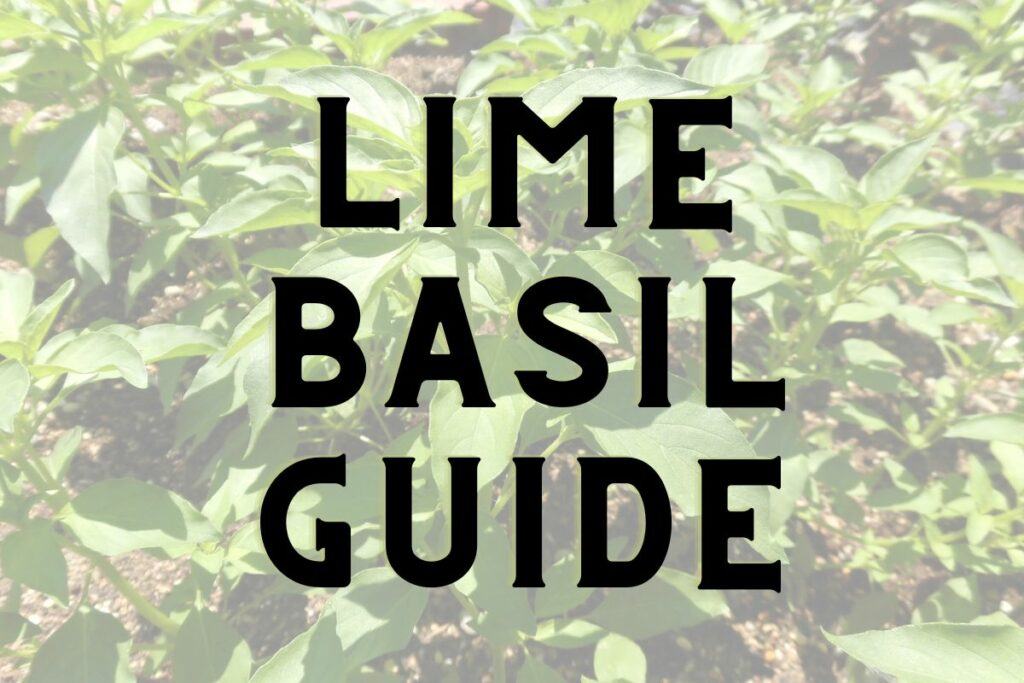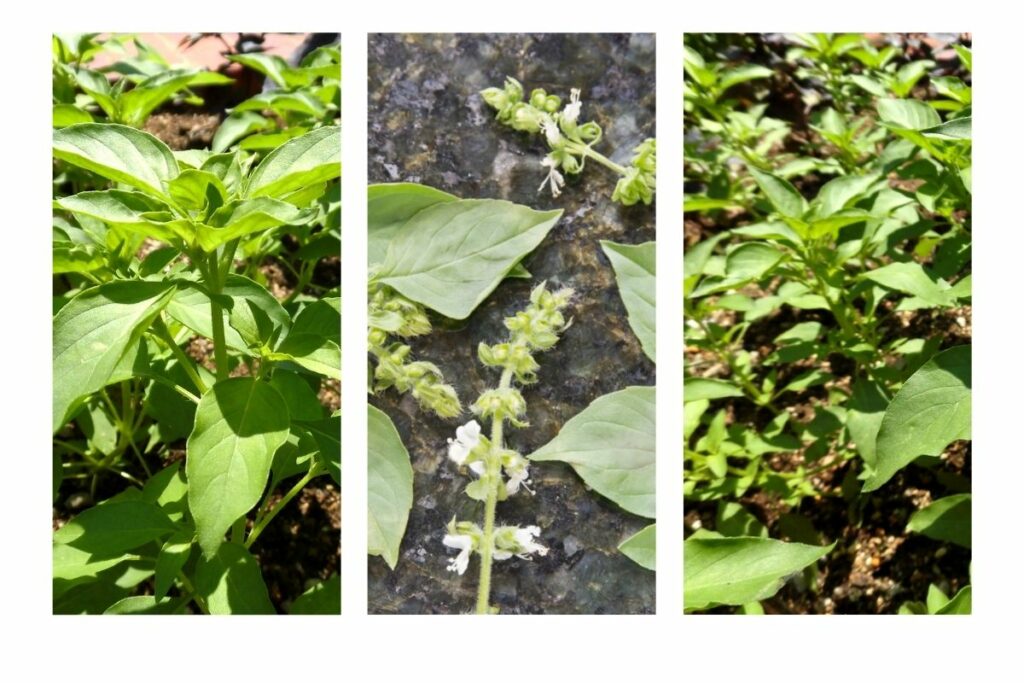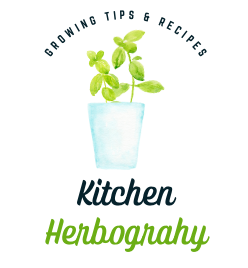As an Amazon Associate I earn from qualifying purchases. This website also participates in other affiliate programs and may earn commissions if you shop through the links used on this website.
(This article was originally published on July 18, 2022 and was last updated on July 26, 2022)
Lime basil (Ocimum Americanum or American Basil) offers fragrant citrusy leaves with a tangy fresh flavor. If you’re ready to incorporate lime basil plants into your garden or your cooking, keep reading for all you need to know.
Basil aficionados are well aware that this is a herb with many varietals.
Lime basil is one more interesting option to add to your home-growing repertoire. If you love other citrus basils like lemon basil or Mrs. Burn’s Lemon (a sweet basil variety) then this is another great option to consider growing where you live.

What is Lime Basil?
Lime basil is one of the names for Ocimum americanum. This herb is also known as American basil, or hoary basil.
But while it is called American basil, this name is a misnomer, an interesting story within the history of this herb.
Lime basil plants are not native to the Americas, but rather to Africa, the Indian subcontinent, China, and to South East Asia (though it is naturalized in parts of tropical America).
This is a herbaceous plant that grows around 30-40cm tall. It has long taproots which extend deep into the soil.
As the name lime basil suggests, the plant has a strong citrus fragrance and citrusy flavor that manifests as a lime-like taste.
Ocimum americanum can be used in many of the same ways as sweet basils (Ocimum basilicum) and strongly resembles common lemon basil varieties in taste, but with a hint of lime rather than lemon flavor.
How to Grow Lime Basil
Lime basil is a relatively easy herb to grow where sufficiently warm and sunny conditions can be provided through the summer months.
Though grown as an annual in most temperate climate gardens, it can be perennial in zones 9 to 11.

Where to Grow Lime Basil
Lime basil is a plant of the lowland tropics, so when growing it in other climates, as with most other basils, sun and warmth are key. This basil grows best in areas where the daytime temperatures are between 22 and 30 degrees C, though it can tolerate temperatures down to around 10 degrees C.
While this basil, like other basils, can potentially be grown in containers, the root growth habit of the plant means that it will typically do best when the roots can delve deep into the soil. So while you could try growing it indoors throughout winter on a sunny windowsill, for example, it’s less likely the plant will thrive in containers growing indoors compared to cinnamon basil or sweet basil, for example.
Lime basil potentially makes an excellent choice for the sunny fringes of a fruit tree guild or forest garden. It will often thrive in a mixed border in a sunny and sheltered position or a dedicated herb garden area. You might also consider growing it (where growing as an annual) in an annual vegetable garden as a companion plant.
When choosing a position to grow lime basil, the most important things to ensure are growing conditions which provide:
- Sun exposure for at least six hours per day, ideally with as much sunlight as possible.
- Free-draining soil that won’t get waterlogged, where excess water can drain away freely.
- A reasonably fertile or rich soil/ growing medium with depth to accommodate the deep roots.
- Ideally, a pH of 6-7. (Though the plants can tolerate a pH between 5 and 8.)
Sowing Lime Basil from Seed
If you wish, lime basil can be sown from seed. Start sowing the lime basil seeds around 6-8 weeks before the typical last frost date in your area.
Prick out and pot the individual seedlings once they are large enough to handle, and place them into their own individual pots, or in a seed bed with cloche protection from the cold.
Make sure that temperatures are reliably warm before you place plants out into your garden.
And remember that indoor plants will need to be hardened off to acclimatize them to outdoor growing conditions.
Planting Lime Basil
You might plant out lime basil you have grown yourself from seed, or a plug plant that you have purchased to bypass the sowing stage.
When planting lime basil, make sure that you give them space when planted. These are not plants that like to be crowded.
Space plants around 25-35cm apart, and make sure that there is good airflow – especially if you are growing this basil in a greenhouse or polytunnel rather than outdoors.
When planting in mixed planting schemes, think about plants that will be good neighbors for one another. This means considering a range of factors, including the root form and growth habit of the plants.
Think about combining lime basil with shallower-rooted species, so all niches below the soil are filled. But also remember when companion planting, that this type of basil is intolerant of overcrowding.
Caring For Lime Basil
Though lime basil is relatively tolerant of dry soils and dry conditions, you do need to make sure that you water regularly during hot conditions in summer or extreme heat.
When watering, make sure that you direct water to the soil at the base of the plant. Try not to wet the foliage as this can increase the likelihood of a disease taking hold on the plant leaf, which can manifest in white spots on the leaf, or brown or black spots. Try to water deeply but always ensure good drainage and make sure excess water can drain away.
It is a good idea to mulch around the base of your plants with some organic matter upon planting.
Keeping the soil around the plants covered over the summer will add slow-release fertility while also helping to conserve moisture and suppress weeds.
Plants growing in reasonably fertile soil will not need additional fertilizer.
In fact, overfeeding a lime basil plant can reduce the pungency of the citrus flavor of this herb.
However, a weak and dilute general-purpose organic liquid plant feed can be fed to plants growing in a deep container every 6 weeks or so through the summer if the growth seems lackluster.
Harvesting Lime Basil
Lime basil is usually ready to harvest within 2-3 months after sowing. Plants usually flower after 12 weeks or so, and seeds mature within around 20 weeks.
The tangy, citrus zing of lime basil is most pronounced if the leaves are harvested before flowering.
You can take the upper leaves and stems at any time once the plant is established. Cutting back hard through harvesting can prevent legginess and keep the plant bushy and productive.
If you want to continue to harvest the leaves for culinary use, cut off the flowers. However, it can be beneficial for garden wildlife if you allow some lime basil to flower. It should attract pollinators and several other insects that aid us in our gardens.
You should be able to harvest from your lime basil (in temperate climates with frost) right up until the cold weather arrives.
One thing to remember is that while this is an annual, you might save seeds from heritage plants to grow next year. You might also cut and freeze some lime basil in ice cubes for later use.
What to Do With Lime Basil
Lime basil can be used wherever you might use another citrus basil variety. The leaves can be eaten raw, or cooked and used in a range of recipes. It is commonly used, for example, in chicken or fish dishes, in Thai cooking (as with Thai basil), in sauces or lime basil dressing for salads, combined with fruits such as peach, cherry, and berries, steamed with rice, or as tea.
As mentioned above, the leaves taste best before the plant flowers. But another reason to let some lime basil flower is to obtain the seeds. Not only might you be able to save seeds to sow the following year. You can also use the seeds to make a refreshing drink.
Where to Buy Lime Basil
Here are some sources for lime basil in the US:
- https://www.seedsavers.org/lime-basil-organic-herb
- https://www.johnnyseeds.com/herbs/basil/citrus-basil/lime-organic-basil-seed-848G.html
- https://www.trueleafmarket.com/products/basil-seeds-lime-organic
- https://www.trufarm.org/store/Organic-Lime-Basil-p200680608
- https://www.groworganic.com/products/org-basil-lime
Elizabeth is a garden designer, consultancy and writer passionate about growing herbs and other edibles in a sustainable way. She works on her own 1/3 acre garden, growing basil alongside her tomatoes in her polytunnel, and indoors alongside a range of other herbs and crops. She loves inspiring others to get growing and enjoying a home grown diet, wherever they live in the world.

